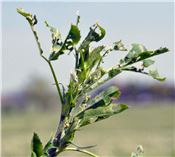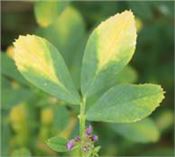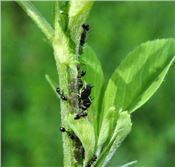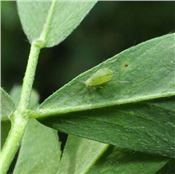How Can A Continuing Mild Winter Affect Alfalfa Insects?
DR. LEE TOWNSEND
LEXINGTON, KY.
Winter temperatures have a significant impact on insect survival and can greatly affect pest activity for the upcoming growing season. Above-normal temperatures can result in earlier appearance, greater numbers, and increased damage from common pests. In some cases, problems may develop with species that seldom cause injury. The abnormally mild conditions during the early part of this winter favor key alfalfa pests and perhaps some that we do not see too often. It is still early so cold weather during January through March can bring things back to near-normal, but it is worth looking ahead just to be prepared.
Key Pests
Alfalfa Weevils
Alfalfa weevils, the key pest of the first cutting, return to fields in early fall following a period of summer inactivity. The arriving snout beetles will feed some, mate, and lay eggs in alfalfa stems when the temperature is above 48o F. Normally, the temperature drops below this activity threshold relatively quickly in fall. As a result, weevils stop laying eggs until spring, so tip feeding by larvae appears in mid-to late April (Figure 1)
However, continued weevil activity and egg-laying during a mild winter leads to earlier than normal egg hatch and larval feeding.
The minimum temperature for alfalfa growth is 42o F, so crop outgrow can outpace weevil development, unless there are overwhelming numbers of the insect. Growing alfalfa plants can tolerate more feeding larvae as stem height increases.
It is important to begin looking for feeding damage as soon as accumulated alfalfa weevil degree-days beginning January 1 exceed 190. Accumulated degree-day totals for Ky weather stations are available at http://weather.uky.edu/php/insectdd_www.php
Potato Leafhopper
Potato leafhopper, the key pest in second and, occasionally, third cuttings, cannot survive Kentucky winters. The insect migrates northward each spring from overwintering sites along the Gulf Coast. Mild winters may allow greater populations in the normal wintering area or survival further north. This could result in above normal numbers arriving in Kentucky, perhaps earlier than normal.
Sap feeding by these tiny insects can reduce alfalfa yield and quality, as well as reduce winter hardiness of the crop. In normal years, infestations of this sap-feeding insect do not produce the distinctive wedge-shaped “hopperburn” symptoms until late in the season (Figure 2). A mild winter boosts injury from this insect, especially in spring-seeded fields. Sweep net sampling is the only reliable way to detect damaging leafhopper populations before symptoms appear.
Occasional Pests
Black Legume Aphid
The black legume aphid (Figure 3) is present in some alfalfa fields late in the season, but few apparently survive Kentucky winters. Some have survived mild winters with populations increasing in spring. Adults have shiny black bodies; nymphs are slate-gray. Legs are white with black tips. Saliva that is injected as this aphid feeds can stunt or kill plants. In addition, this aphid excretes lots of honeydew; consequently, extensive buildups of sooty mold are possible. Ants protect aphids from natural enemies as they tend the aphids to collect honeydew. Sooty mold build-up can affect plant productivity and make alfalfa unpalatable to livestock.
Aphids are cool season insects, so infestations begin in fall and can continue through to spring. Their numbers decline after temperatures exceed 75o F. An insecticide application may be warranted if aphid numbers exceed 30 per stem well before harvest.
The light green pea aphid (Figure 4) is commonly found in Kentucky alfalfa during fall and spring, but this aphid rarely produces any visible symptoms or plant stress. Insecticide recommendations for controlling aphids in alfalfa are available in the UK Cooperative Extension publication, Insecticide Recommendations for Alfalfa, Clover, and Pastures – 2016 (ENT-17). ∆
DR. LEE TOWNSEND: Extension Entomologist, University of Kentucky
 Figure 1. Tip feeding by alfalfa weevils may appear earlier this spring.
Photos Courtesy of: Dr. Lee Townsend, UK
Figure 1. Tip feeding by alfalfa weevils may appear earlier this spring.
Photos Courtesy of: Dr. Lee Townsend, UK
 Figure 2. Better winter survival or earlier arrival of the potato
Figure 2. Better winter survival or earlier arrival of the potato
leafhopper can mean more "hopperburn" on alfalfa.

Figure 3. Black legume aphids on alfalfa with protective ants.

Figure 4. Pea aphids are common on alfalfa in spring but numbers rarely justify action.